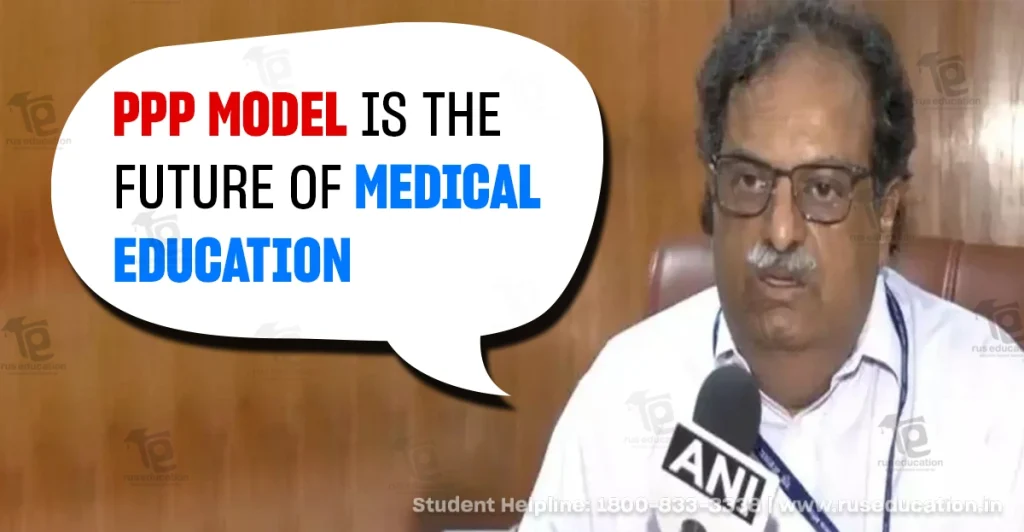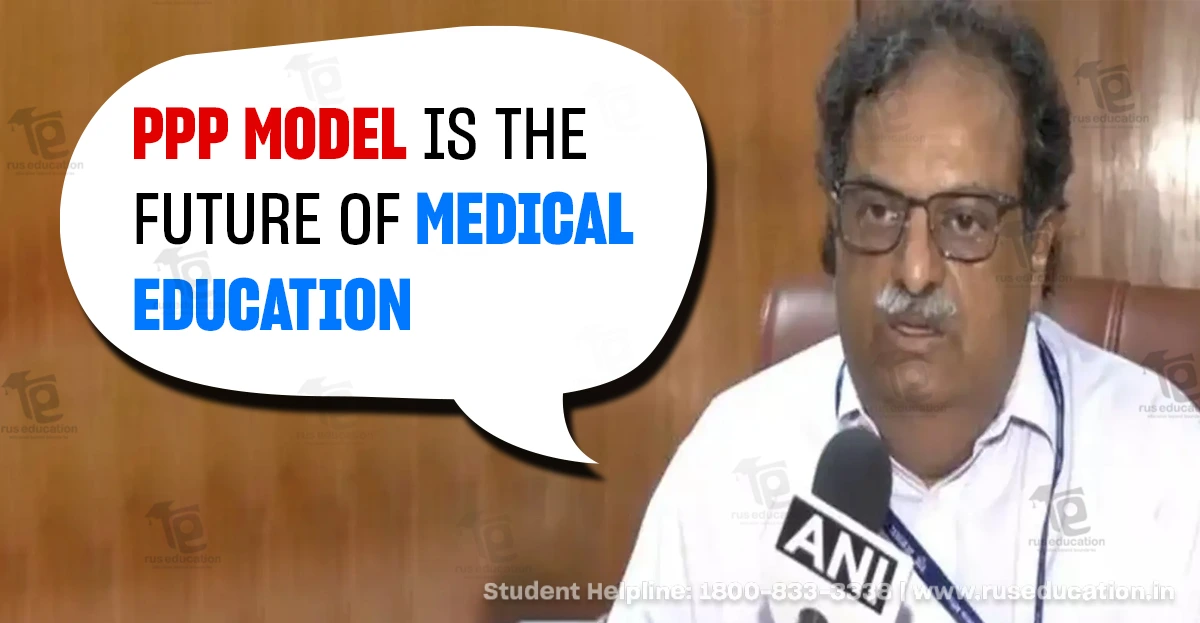 The Chairman of the National Medical Commission (NMC), Dr. Abhijat Sheth, has emphasized that Public-Private Partnership (PPP) will be important in the future of the Indian medical education system. In his recent speech at a meeting in Hyderabad, Dr. Sheth highlighted that collaborative efforts between the public and private sectors can bridge the country’s healthcare and academic infrastructure gaps more efficiently.
The Chairman of the National Medical Commission (NMC), Dr. Abhijat Sheth, has emphasized that Public-Private Partnership (PPP) will be important in the future of the Indian medical education system. In his recent speech at a meeting in Hyderabad, Dr. Sheth highlighted that collaborative efforts between the public and private sectors can bridge the country’s healthcare and academic infrastructure gaps more efficiently.
Building Better Infrastructure Through Collaboration
The PPP model, according to Dr. Sheth, has the potential to convert the district hospitals into full-fledged medical colleges, which provide quality patient care and advanced medical education. He gave examples of other states, such as Gujarat, where the Brownfield Medical College Policy has already been in place, permitting the government hospitals to be upgraded into teaching hospitals by the private institutions – an initiative that is beneficial to the healthcare system and medical students who are yet to be.
He observed that these models are recognition-driven instead of profit-driven, and they tend to enhance healthcare provision within the underserved regions. Dr. Sheth further proposed that the Corporate Social Responsibility (CSR) funds could be well used in the development of the medical infrastructure rather than being left idle or on the wrong path.
Quality Over Quantity in Medical Training
While Indian has witnessed rapid growth in the number of medical colleges and MBBS seats, Dr. Sheth warned that it should not be compromised with quality. He pointed out that several colleges across different states still lack adequate clinical exposures, up-to-date infrastructure, and faculty.
To ensure high academic standards, he stressed the need for:
- Competency-based and patient-centered education.
- Faculty mentorship and continuous medical training.
- Integration of digital learning and skill-oriented assessments.
- Strong collaboration between public and private institutions for shared learning and research.
He also said that the National Exit Test (NExT) will be significant in ensuring that there is uniformity in the evaluation of medical graduates and ensure that there is consistency in the standards of quality across all colleges.
Addressing Concerns Around PPP in Education
While the PPP approach has been valued due to its scalability and innovativeness, some experts have expressed concerns that it may result in the commercialization of medical education. The critics claim that more involvement by the privates may drive tuition rates, and more students from low-income backgrounds will find it difficult to study medicine.
Dr. Sheth, however, assured that strict regulatory oversight by the NMC and state governments would prevent misuse of the model. He emphasized that transparency, equitable access, and affordability would remain key principles of any PPP initiative in medical education.
A Balanced Approach to India’s Healthcare Goals
The statements of the NMC Chairman are connected with the overall perspective of the central government to expand the doctor-patient ratio, promote accessibility, and make healthcare more accessible. The PPP model provides a realistic way to reach those objectives without exploiting the population or compromising the quality of education.
Experts believe that if implemented correctly – with clear guidelines, proper accountability, and fair fee structures – PPP can help India meet its target of producing skilled medical professionals to serve both urban and rural areas effectively.
The Way Forward
Dr. Sheth’s endorsement of PPP as the future of medical education reflects a growing recognition that collaboration, not competition, will drive India’s progress in the healthcare sector. A balanced, transparent, and student-centric partnership between government and private institutions can modernize India’s medical education landscape while maintaining accessibility and integrity.
As India continues to expand its network of medical colleges, the PPP model could emerge as a sustainable and scalable solution for improving medical education, healthcare delivery, and professional training – paving the way toward a healthier and more educated nation.




